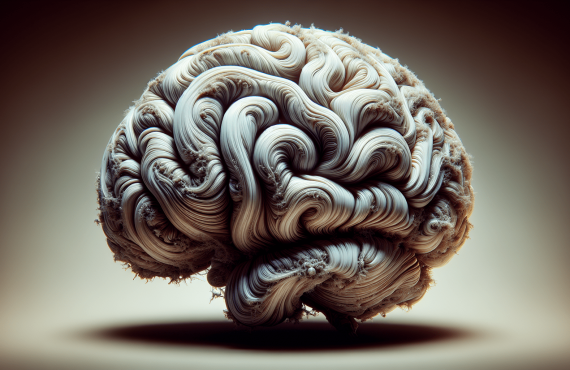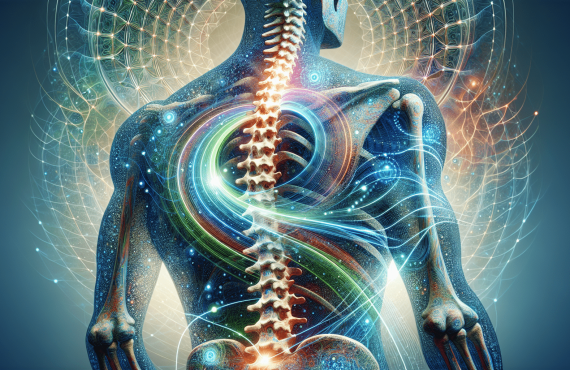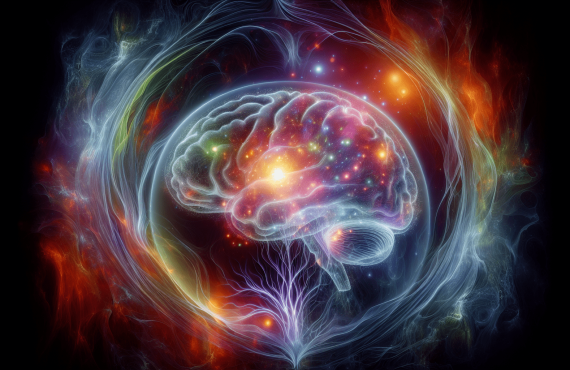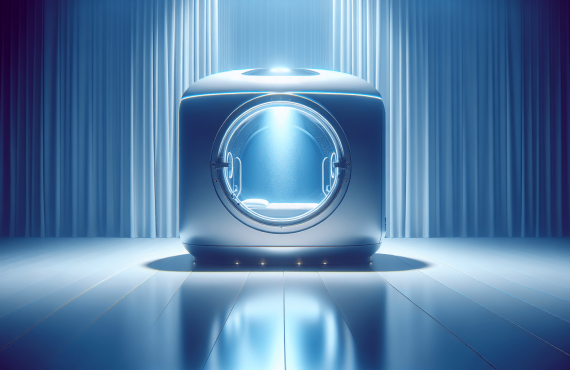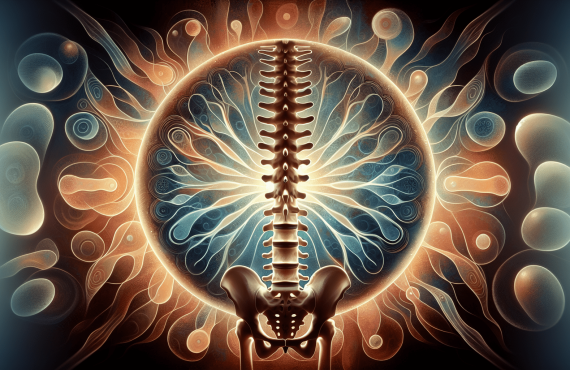Are you curious about the potential downsides of using oxygen? Hyperbaric therapy, also known as hyperbaric oxygen therapy (HBOT), is a treatment that involves breathing pure oxygen in a pressurized environment. By increasing the pressure and concentration of oxygen in the body, this therapy aims to provide various health benefits. When the oxygen-rich blood reaches different areas of the body, it stimulates natural healing processes, reduces inflammation, and enhances immune function. However, you may wonder if there are any potential drawbacks to consider. To find out more about the potential downsides of using oxygen, be sure to reach out to Henry Chiropractic in Pensacola, Florida, owned and operated by Dr. Craig Henry. Dr. Henry and his team of professionals can provide you with the information you need to make informed healthcare decisions.

Table of Contents
Understanding Oxygen: Benefits and Downsides
Essential nature of oxygen for human survival
Oxygen is vital for human survival. It is necessary for the body’s energy production, metabolism, and the functioning of various organs and systems. Without a constant supply of oxygen, the body cannot perform essential functions, leading to cell death and organ failure.
Breathing in oxygen allows the lungs to extract oxygen from the air and transport it to the body’s tissues via the bloodstream. From there, oxygen diffuses into the cells, where it participates in cellular respiration, the process by which cells convert oxygen into energy. This energy production is essential for the body to carry out its day-to-day functions.
Risks associated with exposure to oxygen-rich environments
While oxygen is vital for human survival, exposure to high levels of oxygen can have detrimental effects on the body. Oxygen supports combustion, making it a potential fire hazard. In environments with higher oxygen concentrations than normal atmospheric levels, the risk of fire increases significantly. This is why oxygen tanks and chambers are handled with caution, as any ignition source can cause an explosion.
Additionally, long-term exposure to oxygen-rich environments can lead to a condition known as oxygen toxicity. Oxygen toxicity occurs when the body’s antioxidant defenses are overwhelmed, resulting in the production of harmful reactive oxygen species (ROS). These ROS can cause oxidative damage to cells, leading to inflammation, tissue damage, and potential long-term health issues.
Understanding the balance between oxygen benefits and potential downsides
While oxygen is essential for human survival, it is essential to strike a balance between the benefits of oxygen and its potential downsides. In normal atmospheric conditions, the oxygen concentration is around 21%, which is optimal for human health. Too little oxygen can lead to hypoxia, while too much oxygen can pose risks such as fire hazards and oxygen toxicity.
It is crucial to regulate oxygen exposure carefully, especially in medical settings such as hyperbaric oxygen therapy (HBOT) and oxygen supplementation. Medical professionals must consider the potential benefits against the potential downsides and ensure that patients receive safe and appropriate oxygen therapy.
Hyperbaric Oxygen Therapy (HBOT): An Overview
Definition of HBOT
Hyperbaric Oxygen Therapy (HBOT) is a medical treatment that involves breathing pure oxygen in a pressurized environment. It is typically administered in a specially designed chamber called a hyperbaric chamber. By increasing the pressure and concentration of oxygen, HBOT aims to deliver higher levels of oxygen to the body’s tissues, promoting healing and therapeutic effects.
How HBOT works in the human body
During HBOT, the patient enters a hyperbaric chamber and breathes in 100% oxygen while the chamber’s pressure is increased. This increase in pressure allows more oxygen to dissolve in the bloodstream, reaching areas that may have limited oxygen supply under normal conditions.
The elevated oxygen levels in the blood stimulate the body’s natural healing processes. It promotes tissue repair, reduces inflammation, enhances immune function, and aids in wound healing. The increased availability of oxygen also supports the growth of new blood vessels, which plays a crucial role in tissue regeneration.
Medical applications of HBOT
HBOT has various medical applications and is often prescribed as part of a comprehensive treatment plan for certain conditions. It is commonly used in the treatment of wounds that are slow to heal, such as diabetic foot ulcers and radiation-induced tissue damage. HBOT is also utilized in the management of decompression sickness, a condition that occurs when divers resurface too quickly.
In addition to these applications, HBOT has shown promise in the treatment of conditions such as carbon monoxide poisoning, severe infections, and certain neurological disorders. However, the evidence for these uses is still emerging, and further research is needed to fully understand the potential benefits of HBOT in these areas.
Upside and downside of HBOT
The upside of HBOT lies in its ability to deliver high levels of oxygen to the body’s tissues, promoting healing and supporting various physiological processes. It has been clinically proven to be an effective treatment for specific conditions, particularly in wound healing and decompression sickness.
However, there are downsides to HBOT that must be considered. The therapy requires specialized equipment and facilities, making it less accessible in certain areas. HBOT can also have side effects, including barotrauma (pressure-related injuries), ear and sinus discomfort, and temporary visual changes. These side effects are typically mild and resolve after treatment.
Overall, the benefits and downsides of HBOT should be carefully weighed, and the therapy should be administered under the guidance of trained medical professionals.
Potential Risks and Side Effects of Hyperbaric Oxygen Therapy
Detailed exploration of common side effects
While HBOT has many potential benefits, it can also have several side effects. The most common side effects include:
-
Barotrauma: The increase in pressure during HBOT can cause barotrauma, which includes injuries such as ear and sinus barotrauma, lung barotrauma, and dental barotrauma. This occurs when the body’s internal air spaces are unable to equilibrate with the increased pressure, leading to discomfort or injury.
-
Oxygen Toxicity: Prolonged exposure to high levels of oxygen can lead to oxygen toxicity. This condition occurs when the body’s antioxidant defenses are overwhelmed, resulting in the production of harmful reactive oxygen species (ROS). Oxygen toxicity can manifest as seizures, lung damage, and visual disturbances.
-
Fatigue and Confusion: Some individuals may experience fatigue, confusion, or changes in cognitive function after HBOT. These symptoms are usually temporary and resolve shortly after treatment.
-
Temporary Visual Changes: The increased oxygen levels during HBOT can cause temporary changes in vision, such as blurred or tunnel vision. These visual changes typically resolve once treatment is complete.
Explaining the cause of side effects
The side effects experienced during HBOT can be attributed to the increased pressure and concentration of oxygen in the body. Barotrauma occurs when the body’s air-filled spaces, such as the ears, sinuses, lungs, and teeth, cannot equalize with the higher pressure in the hyperbaric chamber. This can lead to discomfort, pain, and potential injury.
Oxygen toxicity arises from prolonged exposure to high levels of oxygen, which overwhelms the body’s antioxidant defenses. This results in the production of reactive oxygen species (ROS), leading to oxidative damage and potential organ dysfunction. The severity of oxygen toxicity depends on the duration and concentration of oxygen exposure.
Fatigue, confusion, and temporary changes in vision can occur due to the physiological effects of increased pressure and oxygen levels. However, these side effects are generally transient and resolve shortly after treatment.
Tips for managing and mitigating side effects
To manage and mitigate side effects during HBOT, it is essential to follow the guidance of trained medical professionals. They can monitor the patient’s response to treatment, adjust the pressure and duration as necessary, and provide appropriate interventions to alleviate discomfort.
To prevent barotrauma, patients can practice techniques such as equalizing pressure in the ears and sinuses, swallowing, or yawning. These maneuvers help to equalize the air pressure inside and outside the body, reducing the risk of injury to air-filled spaces.
To reduce the risk of oxygen toxicity, HBOT sessions are typically time-limited, and the concentration of oxygen is carefully controlled. Medical professionals closely monitor the patient’s oxygen levels to prevent any harmful effects.
Temporary visual changes often subside after treatment, but patients should report any persistent or concerning visual symptoms to their healthcare provider. They can provide guidance and reassurance regarding these visual changes.
Considering the risk-benefit balance in HBOT
The risks and side effects associated with HBOT should be considered alongside the potential benefits of the therapy. While side effects can occur, they are generally mild and transient, especially when HBOT is administered under appropriate medical supervision.
The benefits of HBOT, such as enhanced wound healing, reduced inflammation, and improved tissue repair, can outweigh the risks for individuals with specific medical conditions. However, it is crucial for healthcare providers to assess each patient’s individual circumstances, weigh the risk-benefit balance, and make informed decisions regarding the use of HBOT.
Oxygen Toxicity: A Deeper Look
Definition and explanation of oxygen toxicity
Oxygen toxicity refers to the potential harm caused by prolonged exposure to high levels of oxygen. This condition occurs when the body’s natural antioxidant defenses are overwhelmed, leading to the production of harmful reactive oxygen species (ROS). These ROS can cause oxidative damage to cells and tissues, resulting in inflammation and potential organ dysfunction.
Two types of oxygen toxicity are recognized:
-
Central Nervous System (CNS) Oxygen Toxicity: In CNS oxygen toxicity, the brain and spinal cord are primarily affected. This can result in symptoms such as seizures, visual disturbances, confusion, and loss of consciousness. The severity of CNS oxygen toxicity varies depending on factors such as the concentration and duration of oxygen exposure.
-
Pulmonary Oxygen Toxicity: Pulmonary oxygen toxicity primarily affects the lungs. Prolonged exposure to high levels of oxygen can cause inflammation and damage to lung tissue, leading to conditions such as acute respiratory distress syndrome (ARDS) and pulmonary fibrosis.
Potential causes and contributing factors
Several factors can contribute to the development of oxygen toxicity:
-
Oxygen Concentration: The higher the concentration of oxygen, the greater the risk of oxygen toxicity. While the air we breathe contains around 21% oxygen, exposure to concentrations above this level, such as those used in HBOT, can increase the risk.
-
Duration of Exposure: The longer the duration of exposure to high levels of oxygen, the higher the risk of oxygen toxicity. Prolonged exposure overwhelms the body’s antioxidant defenses, allowing harmful reactive oxygen species to accumulate.
-
Individual Susceptibility: Certain individuals may be more susceptible to oxygen toxicity due to underlying health conditions or genetic factors. Conditions such as chronic obstructive pulmonary disease (COPD) and pre-existing lung damage can increase the risk of pulmonary oxygen toxicity.
Symptoms and treatment options
The symptoms of oxygen toxicity can vary depending on the type and severity of the condition. In CNS oxygen toxicity, symptoms may include seizures, visual disturbances, confusion, and loss of consciousness. Pulmonary oxygen toxicity can manifest as shortness of breath, cough, chest pain, and decreased lung function.
Treatment for oxygen toxicity depends on the specific symptoms and severity. In cases of CNS oxygen toxicity, immediate removal from the high-oxygen environment is necessary. Antiepileptic medications may be administered to control seizures. Pulmonary oxygen toxicity may require supportive care, such as oxygen supplementation and medication to manage inflammation and lung damage.
Prevention is the key to managing oxygen toxicity. Medical professionals carefully monitor oxygen levels during treatments such as HBOT to minimize the risk of toxicity. By balancing the potential benefits with the potential downsides, healthcare providers can optimize outcomes and minimize the risk of oxygen toxicity.

Case Study: Henry Chiropractic and Their Approach to HBOT
Introduction to Henry Chiropractic
Henry Chiropractic is a prominent chiropractic clinic located in Pensacola, Florida. Owned and operated by Dr. Craig Henry, they offer comprehensive chiropractic care to improve health and wellness in all areas of a patient’s life. Whether someone is experiencing back pain, neck pain, or seeking overall well-being, Dr. Henry and his team are dedicated to providing personalized care and individualized treatment plans.
Their unique approach to chiropractic care and HBOT
At Henry Chiropractic, the team believes in taking a holistic approach to healthcare, addressing both the symptoms and underlying causes of health issues. They combine chiropractic adjustments with various therapeutic modalities to promote optimal healing and pain relief.
One of the unique aspects of Henry Chiropractic is their incorporation of Hyperbaric Oxygen Therapy (HBOT) into their treatment protocols. Dr. Craig Henry recognizes the potential benefits of HBOT in supporting the body’s natural healing processes and enhancing overall wellness. By offering HBOT alongside chiropractic care, patients have access to a comprehensive approach to improving their health.
Experiences and qualifications of Dr. Craig Henry
Dr. Craig Henry is a licensed chiropractor with extensive experience in the field. He is dedicated to helping patients achieve their health goals, providing compassionate care and individualized treatment plans. Dr. Henry has a comprehensive understanding of chiropractic techniques and therapies, allowing him to tailor treatments to each patient’s specific needs.
Dr. Henry’s qualifications include a Doctorate of Chiropractic from Life University in Marietta, Georgia. He is also actively involved in continuing education, staying updated on the latest advancements and techniques in chiropractic care. With his expertise and genuine care for his patients, Dr. Craig Henry has earned a reputation as a trusted chiropractor in the Pensacola community.
Role and experience of Dr. Aaron Hixon at Henry Chiropractic
Dr. Aaron Hixon is another valued member of the Henry Chiropractic team. He is a Florida native, raised in Milton, FL, and is a licensed chiropractic physician in the state of Florida. Dr. Hixon obtained a Bachelor of Science degree in Exercise Science from Florida Atlantic University, followed by his Doctor of Chiropractic degree from Palmer College of Chiropractic.
Dr. Hixon is skilled in various chiropractic techniques, including Diversified, Gonstead Spinal Manipulation, Instrument Assisted Soft Tissue Mobilization (IASTM), and Myofascial Release Technique (MRT). He is passionate about helping others and has volunteered his time at local community establishments such as Habitat for Humanity, grocery stores, and the YMCA.
With Dr. Hixon’s expertise and dedication to patient care, Henry Chiropractic continues to provide exceptional chiropractic services and personalized treatment plans for their patients.
Oxygen and Physical Activity: A Consideration
Role of oxygen during physical activity
Oxygen plays a crucial role in physical activity and exercise. As the body engages in aerobic activities, such as running, swimming, or cycling, the muscles require a constant supply of oxygen to produce energy. Oxygen is necessary for the process of cellular respiration, which converts nutrients into usable energy molecules called adenosine triphosphate (ATP).
During exercise, the body increases its demand for oxygen. The cardiovascular and respiratory systems work together to deliver oxygen to the working muscles and remove carbon dioxide, a waste product of cellular respiration. The more intense the exercise, the more oxygen the body requires to meet the increased energy demands.
Impact of oxygen-rich and oxygen-deprived environments on athletic performance
The availability of oxygen can significantly impact athletic performance. In oxygen-rich environments, such as at lower altitudes, the body can efficiently extract oxygen from the air, ensuring an adequate supply to the muscles. This results in optimal energy production, enhanced endurance, and reduced fatigue.
On the other hand, oxygen-deprived environments, such as at higher altitudes, pose challenges for athletes. At higher altitudes, the air contains less oxygen, making it more difficult for the body to meet its oxygen demands. This can lead to decreased performance, increased fatigue, and reduced exercise capacity.
To acclimate to oxygen-deprived environments, some athletes may undergo altitude training, a practice that involves training at high altitudes to stimulate physiological adaptations. This can help improve the body’s ability to utilize oxygen more efficiently, resulting in better performance at sea level.
Potential risks associated with oxygen supplementation in sports
In recent years, oxygen supplementation methods, such as oxygen bars and canned oxygen, have gained popularity among athletes. These methods involve inhaling higher concentrations of oxygen to potentially enhance performance and aid in recovery.
While oxygen supplementation may have benefits for individuals with respiratory conditions or at high altitudes, its effectiveness in enhancing athletic performance remains debated. Some studies suggest that oxygen supplementation during exercise does not significantly improve performance in well-trained individuals who already have optimal oxygen delivery to their muscles.
Furthermore, excessive or improper use of supplemental oxygen can have downsides. Inhaling high concentrations of oxygen for prolonged periods can disrupt the body’s natural regulation mechanisms and potentially lead to oxygen toxicity. Therefore, athletes should exercise caution and consult with healthcare professionals before considering oxygen supplementation as a performance-enhancing strategy.
Oxygen and Aging: Exploring the Oxidative Stress Theory
Explanation of the oxidative stress theory
The oxidative stress theory suggests that the accumulation of oxidative damage caused by reactive oxygen species (ROS) plays a significant role in the aging process. ROS are natural byproducts of cellular metabolism, and under normal conditions, the body has antioxidant defense systems in place to neutralize them.
However, as the body ages, these defense systems may become less effective, resulting in the accumulation of oxidative damage. This damage can lead to disruptions in cellular function, DNA mutations, and inflammation, all of which contribute to the aging process.
The role of oxygen in the aging process
Oxygen is both essential for life and a potential contributor to aging. During cellular respiration, oxygen is utilized to produce energy. However, this process also produces ROS as byproducts. While ROS play important roles in cellular signaling and immune function, excessive ROS production can lead to oxidative stress and cellular damage.
Over time, the cumulative oxidative damage caused by ROS can contribute to the aging process. This damage can affect various cellular components, including proteins, lipids, and DNA. It can impair cellular function, disrupt normal physiological processes, and contribute to age-related conditions such as neurodegenerative diseases, cardiovascular diseases, and cancer.
Potential downsides of increased oxygen exposure over time
Increased oxygen exposure over time, particularly in oxygen-rich environments, may contribute to the cumulative oxidative damage mentioned earlier. While the body has antioxidant defense systems to neutralize ROS, prolonged exposure to high levels of oxygen can overwhelm these defenses, leading to oxidative stress.
Oxidative stress can result in cellular damage, chronic inflammation, and accelerated aging. Additionally, oxygen-rich environments can pose fire hazards and increase the risk of oxygen toxicity. Therefore, it is crucial to strike a balance between providing the body with the necessary oxygen for life and avoiding excessive oxygen exposure.
Understanding the potential downsides of increased oxygen exposure over time can help individuals make informed choices regarding oxygen therapies, supplementation, and overall lifestyle factors that may impact aging.
Public Perception and Misconceptions About Oxygen Use
Common myths and misconceptions about oxygen use
-
Oxygen is always beneficial: While oxygen is essential for human survival, excessive or improper use of supplemental oxygen can have downsides. Oxygen therapy should be administered under medical supervision and according to prescribed guidelines to ensure safety and effectiveness.
-
Oxygen is a cure-all: While oxygen therapy can provide relief for specific medical conditions, it is not a cure-all solution. It should be used as part of a comprehensive treatment plan, addressing the underlying causes and considering individual patient needs.
-
Oxygen supplementation improves athletic performance: While oxygen supplementation methods have gained popularity among athletes, their effectiveness in enhancing performance remains debated. Proper training, nutrition, and conditioning play more significant roles in athletic performance than supplemental oxygen alone.
-
Oxygen is addictive: Oxygen itself is not addictive. However, individuals with certain respiratory conditions may require oxygen therapy to manage their condition. In such cases, dependency on supplemental oxygen may develop due to the underlying medical condition, not the oxygen itself.
Public perception versus scientific understanding
Public perception of oxygen use may differ from scientific understanding due to various factors, including misinformation, media portrayal, and personal experiences. The general public often associates oxygen with immediate benefits and may perceive it as a universal remedy for various health issues.
However, scientific understanding recognizes both the benefits and downsides of oxygen use. Oxygen therapy and supplementation should be based on medical evaluation and prescribed according to individual needs. Medical professionals consider factors such as oxygen levels, specific medical conditions, and potential risks before recommending or administering oxygen therapies.
Educating the public about the proper use and limitations of oxygen can help bridge the gap between public perception and scientific understanding, leading to more informed decision-making.
Importance of proper education about oxygen use
Proper education about oxygen use is crucial for individuals, healthcare professionals, and the general public. It helps dispel myths and misconceptions and ensures that oxygen therapies and supplementation are used correctly and responsibly.
Providing accurate information about the benefits and downsides of oxygen use empowers individuals to make informed decisions regarding their health. Healthcare professionals play a vital role in patient education, ensuring that individuals understand the rationale behind oxygen therapies, potential risks, and expected outcomes.
By fostering a greater understanding of oxygen use, both in medical settings and daily life, individuals can optimize the benefits while minimizing potential downsides, fostering a safer and more knowledgeable approach to oxygen use.
The Medical Perspective on Oxygen Use
Doctor recommendations for oxygen use
Oxygen use should always be guided by medical professionals. Doctors play a crucial role in evaluating patients’ oxygen needs, prescribing appropriate oxygen therapies, and monitoring their effectiveness. They consider factors such as oxygen levels, underlying medical conditions, and potential risks before recommending oxygen therapy.
Medical professionals may recommend oxygen use in various situations, including:
-
Chronic Obstructive Pulmonary Disease (COPD): Individuals with severe COPD may require oxygen therapy to alleviate symptoms and improve lung function. Oxygen can help correct low oxygen levels and reduce shortness of breath.
-
Acute Respiratory Distress Syndrome (ARDS): ARDS is a severe lung condition that often requires mechanical ventilation and oxygen therapy. Supplemental oxygen is provided to maintain oxygen saturation levels and support vital organ function.
-
Hypoxia: Hypoxia refers to low oxygen levels in the blood or tissues. Oxygen therapy is crucial in restoring oxygen levels to a safe range and preventing complications.
-
Carbon Monoxide Poisoning: Oxygen therapy is the primary treatment for carbon monoxide poisoning. High levels of oxygen help displace carbon monoxide from hemoglobin, improving oxygen delivery to the tissues.
Situations when oxygen therapy may be prescribed
Oxygen therapy may be prescribed in various situations, including acute and chronic respiratory conditions, certain cardiovascular disorders, and during surgical procedures. Some common situations where oxygen therapy may be prescribed include:
-
Chronic Obstructive Pulmonary Disease (COPD): Severe cases of COPD, where the lungs are unable to adequately oxygenate the blood, may require long-term oxygen therapy.
-
Pneumonia: Severe cases of pneumonia can cause significant oxygen deficiency, requiring supplemental oxygen to support respiratory function until the infection subsides.
-
Heart Failure: Advanced heart failure can lead to reduced oxygen supply to the body’s tissues. Oxygen therapy may be prescribed to alleviate symptoms such as shortness of breath and fatigue.
-
Postoperative Care: After certain surgical procedures, especially those involving the lungs or respiratory system, oxygen therapy may be prescribed to aid in recovery and support healing.
Understanding medical guidelines and safety precautions
Medical guidelines and safety precautions are crucial for ensuring safe and effective oxygen therapy. Healthcare professionals adhere to established protocols to determine appropriate oxygen levels, delivery methods, and monitoring requirements for each individual patient.
Safety precautions include:
-
Proper Utilization of Equipment: Oxygen therapy requires specialized equipment, such as oxygen concentrators, cylinders, and masks. Healthcare professionals ensure that equipment is used correctly, regularly maintained, and replaced as needed.
-
Monitoring Oxygen Levels: Patients undergoing oxygen therapy are closely monitored to ensure that oxygen levels are within the desired range. Monitoring can be done through pulse oximetry, arterial blood gas analysis, or other appropriate methods.
-
Educating Patients: Healthcare professionals provide education to patients regarding the proper use of oxygen equipment, recognizing signs of oxygen toxicity or other side effects, and responding to emergencies.
By following medical guidelines and safety precautions, healthcare professionals can optimize the benefits of oxygen therapy and ensure patient safety.
Understanding the Future of Oxygen Therapies
Current research and developments in the field
The field of oxygen therapies is continually evolving, with ongoing research and developments providing new insights and potential advancements. Some current areas of research include:
-
Hyperbaric Oxygen Therapy (HBOT): Researchers are exploring the potential benefits of HBOT in various medical conditions, such as traumatic brain injury, stroke, and neurodegenerative disorders. Additionally, advancements in hyperbaric chamber technology aim to improve patient comfort and accessibility.
-
Oxygen Delivery Systems: Efforts are being made to develop more efficient and portable oxygen delivery systems. This includes advancements in oxygen concentrators, wearable oxygen delivery devices, and technologies that allow for more controlled and precise oxygen administration.
-
Oxygen-Based Therapies: Researchers are investigating new therapeutic modalities that utilize the unique properties of oxygen. These include oxygen-carrying nanoparticles for targeted drug delivery, oxygen-based gene therapies, and novel oxygen-based treatment approaches for cancer and other diseases.
Potential future applications of oxygen therapies
The future of oxygen therapies holds promise for new applications and improved treatment outcomes. Some potential future applications include:
-
Neurological Disorders: Continued research may uncover the potential benefits of oxygen therapies in treating neurodegenerative disorders such as Alzheimer’s disease, Parkinson’s disease, and multiple sclerosis. Oxygen’s role in promoting cellular healing and reducing inflammation may hold potential for these conditions.
-
Wound Healing: Advances in oxygen therapies may lead to more effective treatment options for chronic wounds, diabetic ulcers, and non-healing surgical incisions. HBOT and other oxygen-based therapies have shown promise in promoting tissue repair and improving wound healing outcomes.
-
Sports Performance: As our understanding of oxygen physiology and sports performance improves, oxygen therapies may be optimized to enhance athletic performance, aid in recovery, and reduce fatigue. Research may reveal more targeted and precise methods to deliver oxygen to muscles during exercise.
Concerns and considerations for the future of oxygen use
As oxygen therapies continue to advance, it is essential to consider both the benefits and potential risks associated with their utilization. Safety protocols, guidelines, and proper medical supervision are crucial to ensure the safe and effective use of oxygen therapies.
Additionally, cost, accessibility, and individual differences in response to oxygen therapies should be considered. Ensuring equitable access to these therapies and tailoring treatments to individual patient needs will be important for optimizing outcomes and reducing potential disparities in healthcare.
By addressing these concerns and considerations, the future of oxygen therapies can be shaped in a way that maximizes their benefits and minimizes potential downsides, improving patient care and overall well-being.





